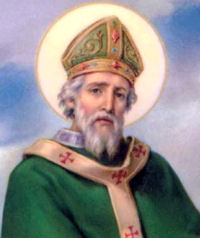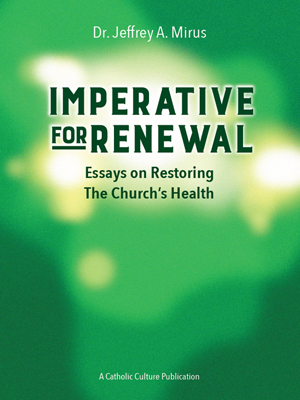Make your gift today!
Help keep Catholics around the world educated and informed.
Already donated? Log in to stop seeing these donation pop-ups.
Lent: March 17th
Optional Memorial of St. Patrick, bishop and confessor (Solemnity Aus, Ire, Feast New Zeal, Scot, Wales)
» Enjoy our Liturgical Seasons series of e-books!
This day is not all about leprechauns, shamrocks and green beer. This is a day to honor and pray to St. Patrick. He was an influential saint who, 1,500 years ago, brought Christianity to the little country of Ireland. He was born about 385 in the British Isles, was carried off while still very young during a raid on Roman Britain by the Irish and sold as a slave. At the end of six years he contrived to escape to Europe, became a monk and was ordained; he then returned to Ireland to preach the Gospel. During the thirty years that his missionary labors continued he covered the Island with churches and monasteries; in 444 he founded the metropolitan see of Armagh. St. Patrick died in 461. After fifteen centuries he remains for all Irishmen the great bishop whom they venerate as their father in the Faith.
St. Patrick
Not many facts are known about the life of St. Patrick. We know that he was born around 415 AD, and was a Roman Briton. When he was about 16, while he was tending his sheep some Irish raiders captured him and made him a slave. He eventually was able to escape and return to Britain. There he heard the call to return and bring Christianity to Ireland. He was ordained a priest, consecrated a bishop and came back to Ireland around 435 AD. Many legends are associated around St. Patrick: how he drove the snakes out of Ireland, and the use of the shamrock to teach the mystery of the Trinity. Whether or not the legends are true, St. Patrick succeeded in bringing Catholicism to Ireland, and in time, the whole country converted from their pagan gods to the one true God.
Although a small country, Ireland has played a large role in saving and bringing Christianity throughout the world. During the early Dark Ages, the Irish monasteries preserved Western writings while Europe remained in darkness. But as the Catholic country remained solidly Catholic, the Irish spread the faith to all corners of the world. To learn more on this subject, read Thomas Cahill's How the Irish Saved Civilization.
We have a few works attributed to St. Patrick, one being his autobiography called Confessions. It is a short summary of the events in his life, written in true humility. Below is a short excerpt:
I am greatly God's debtor, because he granted me so much grace, that through me many people would be reborn in God, and soon after confirmed, and that clergy would be ordained everywhere for them, the masses lately come to belief, whom the Lord drew from the ends of the earth, just as he once promised through his prophets: "To you shall the nations come from the ends of the earth, and shall say, Our fathers have inherited naught hut lies, worthless things in which there is no profit." And again: "I have set you to be a light for the Gentiles that you may bring salvation to the uttermost ends of the earth."
Patronage: against fear of snakes; against ophidiophobia; against snake bites; against snakes; barbers; barrel makers; blacksmiths; cattle; coopers; engineers; excluded people; hairdressers; miners; ophidiophobics; Ireland; Nigeria (1961)
See Catholicsaints.info for the long list of different diocese that claim St. Patrick as their patron.
Symbols and Representation: A bishop trampling on snakes; bishop driving snakes away; shamrock; snakes; cross; harp; demons; baptismal font; Purgatory; serpent
Highlights and Things to Do:
- Listen to Catholic Culture's Podcasts and Audiobooks:
- Way of the Fathers by Mike Aquilina, 51—St. Patrick: Paternal and Patristic
- Audiobook read by James Majewski:
- Read more about St. Patrick:
- Honor St. Patrick by trying typical Irish fare: corned beef and cabbage, soda bread, scones, stew, Shepherd's pie, potatoes in various forms and the famous beer and spirits of Ireland. For dessert, try making the Irish Porter Cake. See Catholic Cuisine for some food ideas.
- Read the Lorica (Breastplate) of St. Patrick. Here is an older translation — pray it with your family after your rosary tonight.
- From the Catholic Culture library:
- The Conversion of Ireland by Warren Carroll
- The Irish Soldiers of Mexico by Michael Hogan
- The Irish Madonna of Hungary by Zsolt Aradi
- Our Lady in Old Irish Folklore and Hymns by James F. Cassidy
- Listen to Catholic Culture's Way of the Fathers St. Patrick: Paternal and Patristic by Mike Aquilina.
- St. Patrick's grave is unknown, but his relics are located in Down Cathedral.






